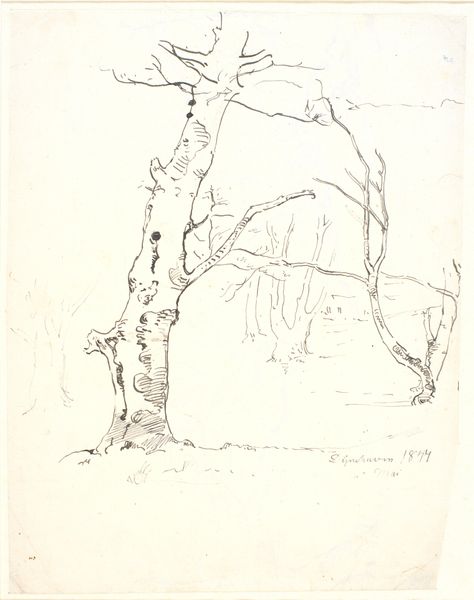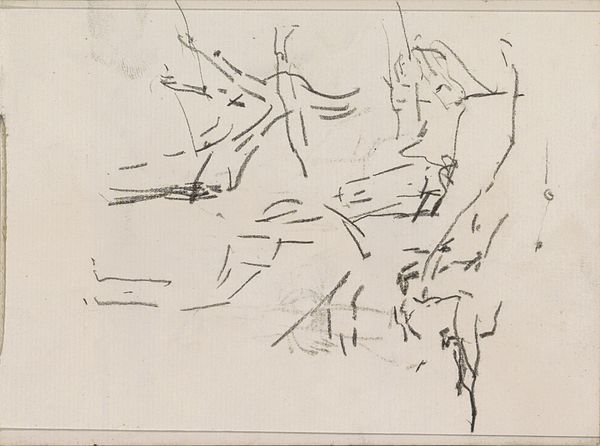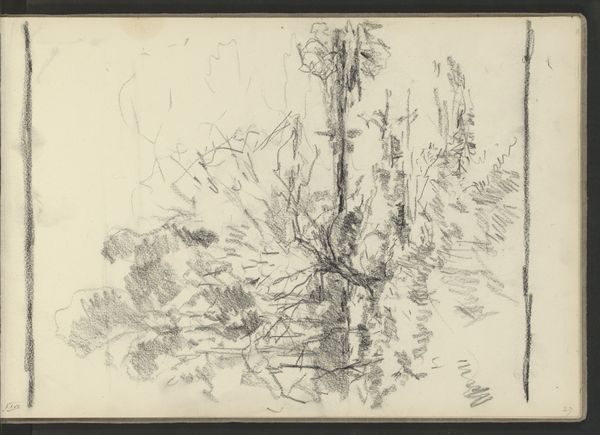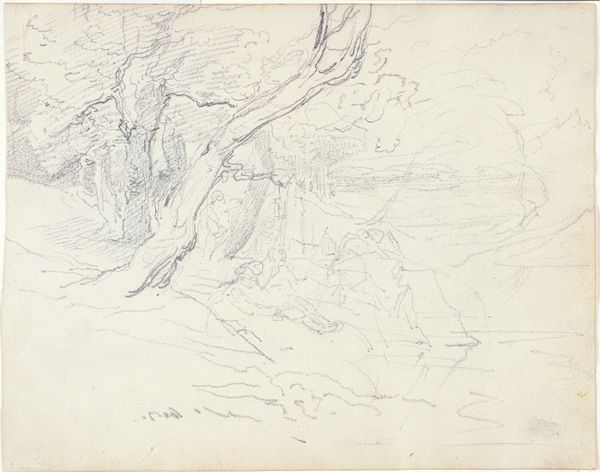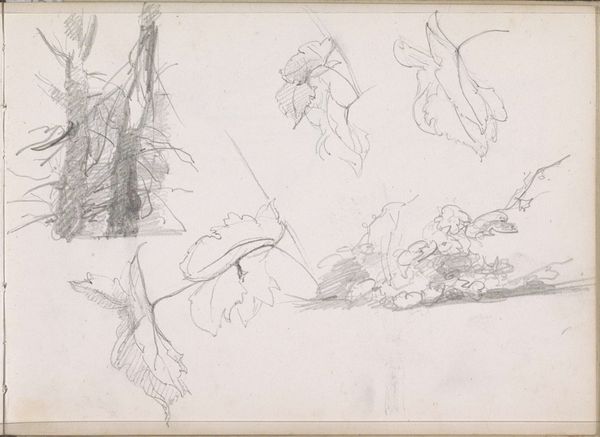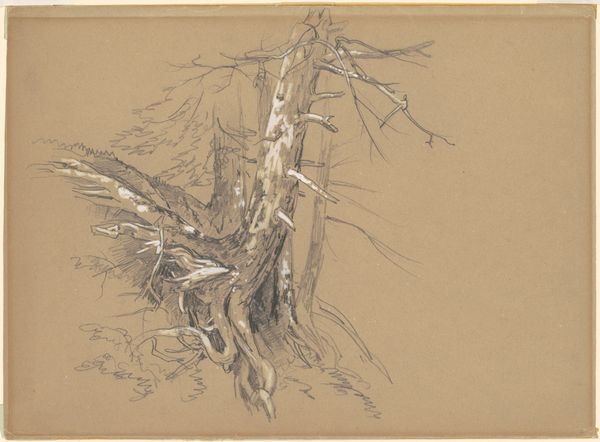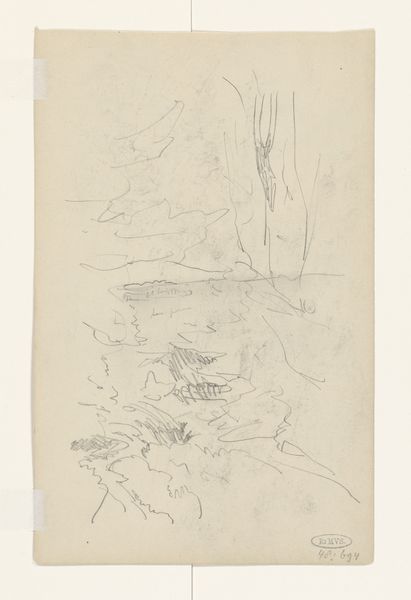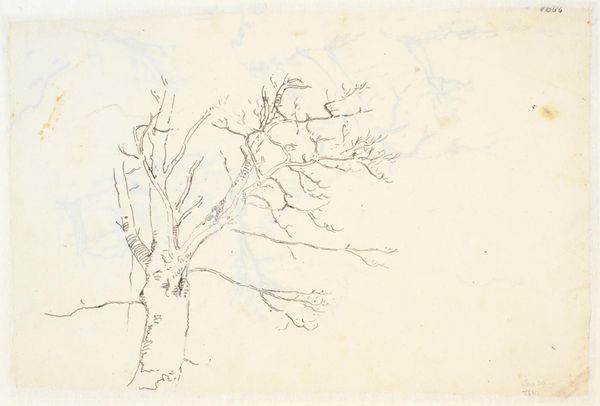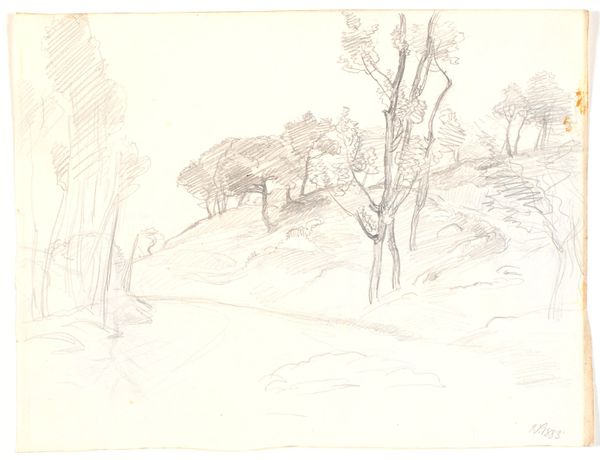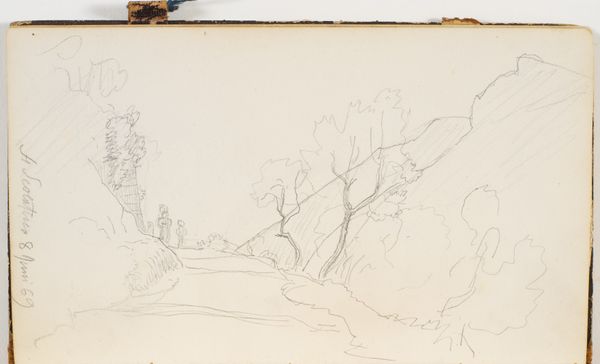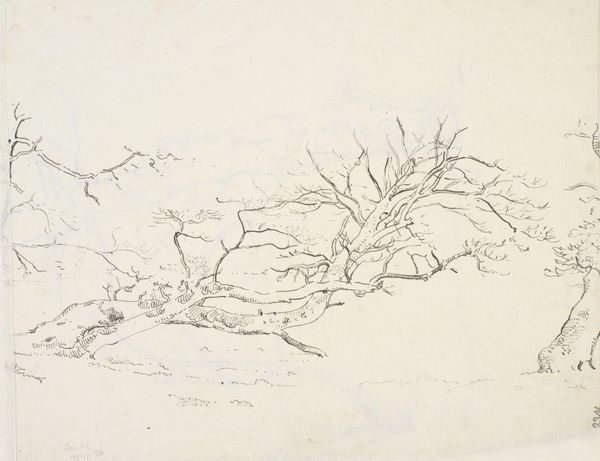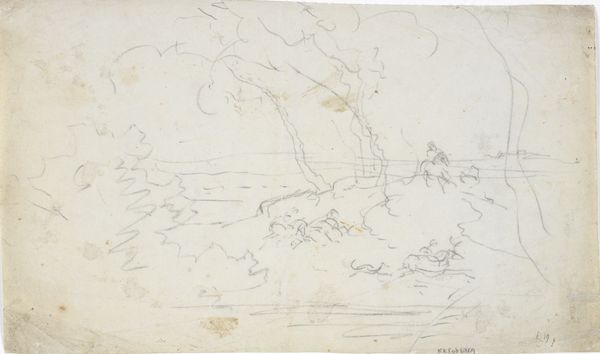
Dimensions: 232 mm (height) x 328 mm (width) (bladmaal)
Editor: So, here we have Joakim Skovgaard's "Grenstudier. Classens Have" from 1898, an ink and pencil drawing. It's interesting how skeletal the trees appear; they seem to be reaching out. What do you see in this piece? Curator: What strikes me is how this simple drawing captures a moment in time, a specific place – Classens Have – which was, and remains, a public park in Copenhagen. Think about the role of parks in the late 19th century. They were intentionally designed spaces meant to democratize nature, to provide access to beauty and fresh air for all social classes, in a time when industrialization was really taking hold. Editor: That's fascinating! So this drawing isn't just about trees, but about access and social ideals? Curator: Precisely! Skovgaard, like many artists of the time, was deeply invested in creating a national artistic identity, rooted in the Danish landscape. These landscapes became symbols of national pride and cultural unity, and showing places where all social classes would be welcome would push such agendas further. How does understanding this context change how you view the artwork? Editor: It makes it feel more intentional, less like a spontaneous sketch and more like a statement. The simplicity could be about making art accessible, just like the park itself. Curator: Exactly. It encourages us to reflect on how artistic representations of public spaces can shape our understanding of national identity and social values. The ink drawing as a medium can reflect what many may not have had access to. Editor: I never considered the social and political implications of a simple landscape drawing. It’s amazing how much context can change the way we interpret art! Curator: Indeed! By looking beyond the surface, we gain a deeper appreciation for the complex interplay between art, society, and history.
Comments
No comments
Be the first to comment and join the conversation on the ultimate creative platform.
